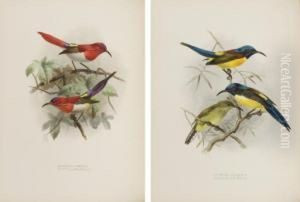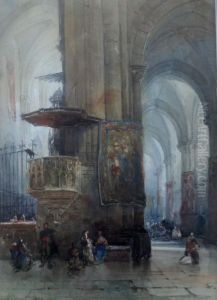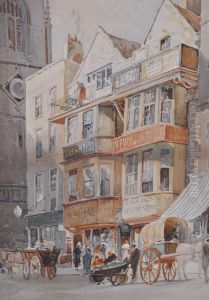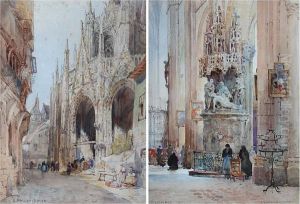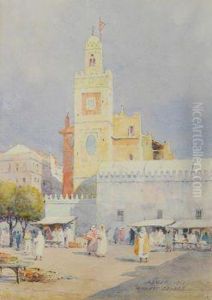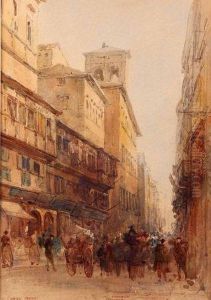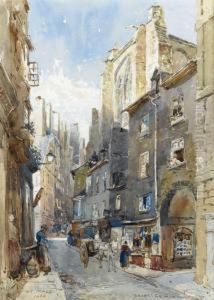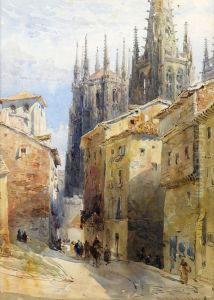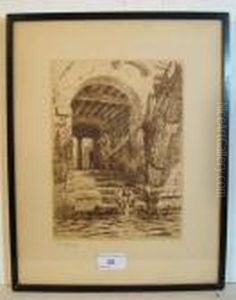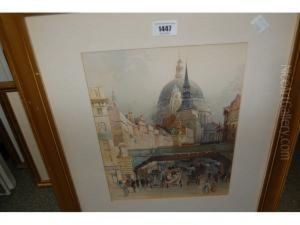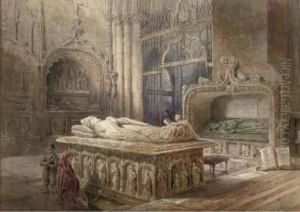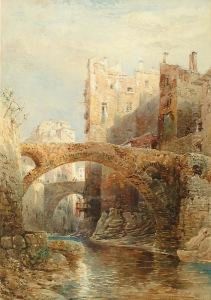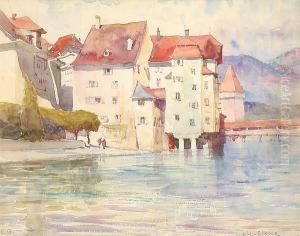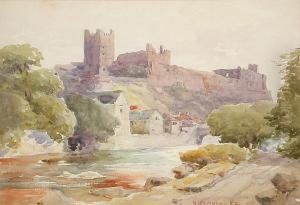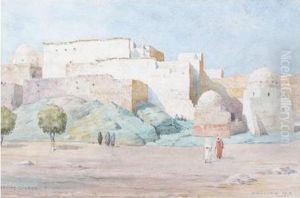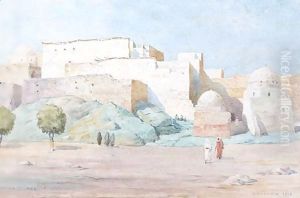Sir Ernest George Paintings
Sir Ernest George was a notable English architect, landscape architect, and printmaker in the late 19th and early 20th centuries. Born on June 13, 1839, in London, he initially trained under Samuel Hewitt before traveling to various countries in Europe to study their architectural styles. George's architectural style was primarily influenced by the Arts and Crafts Movement and traditional English vernacular architecture. He was also influenced by his travels, incorporating elements from continental Europe into his designs.
George's career was marked by a wide variety of projects, ranging from residential homes to commercial buildings. He was particularly renowned for his domestic architecture, which often featured intricate brickwork, Tudor-style timbering, and picturesque compositions. These designs contributed to the shaping of the suburban landscape in England during the period.
In partnership with fellow architect Thomas Vaughan, he established the firm Ernest George and Peto in 1869. Harold Peto, a renowned landscape architect, joined the firm in 1880, which was then renamed to George & Peto. This partnership lasted until 1890, after which George continued his practice with other partners. One of George's most famous apprentices was Sir Edwin Lutyens, who would go on to become one of the most prominent British architects of his time.
Apart from his architectural practice, George was also an accomplished artist and etcher. He produced a series of etchings that were highly regarded for their artistic quality and attention to detail. These works exhibited his keen observation and appreciation for the built environment, showcasing both European scenes and his own architectural works.
Throughout his career, George was recognized for his contributions to architecture and was awarded various honors. He was knighted in 1911 for his services to architecture. Sir Ernest George's influence on British architecture was significant, and his works remain studied and admired for their craftsmanship and design. He passed away on August 23, 1922, leaving behind a legacy that continues to be celebrated in the field of architecture.
